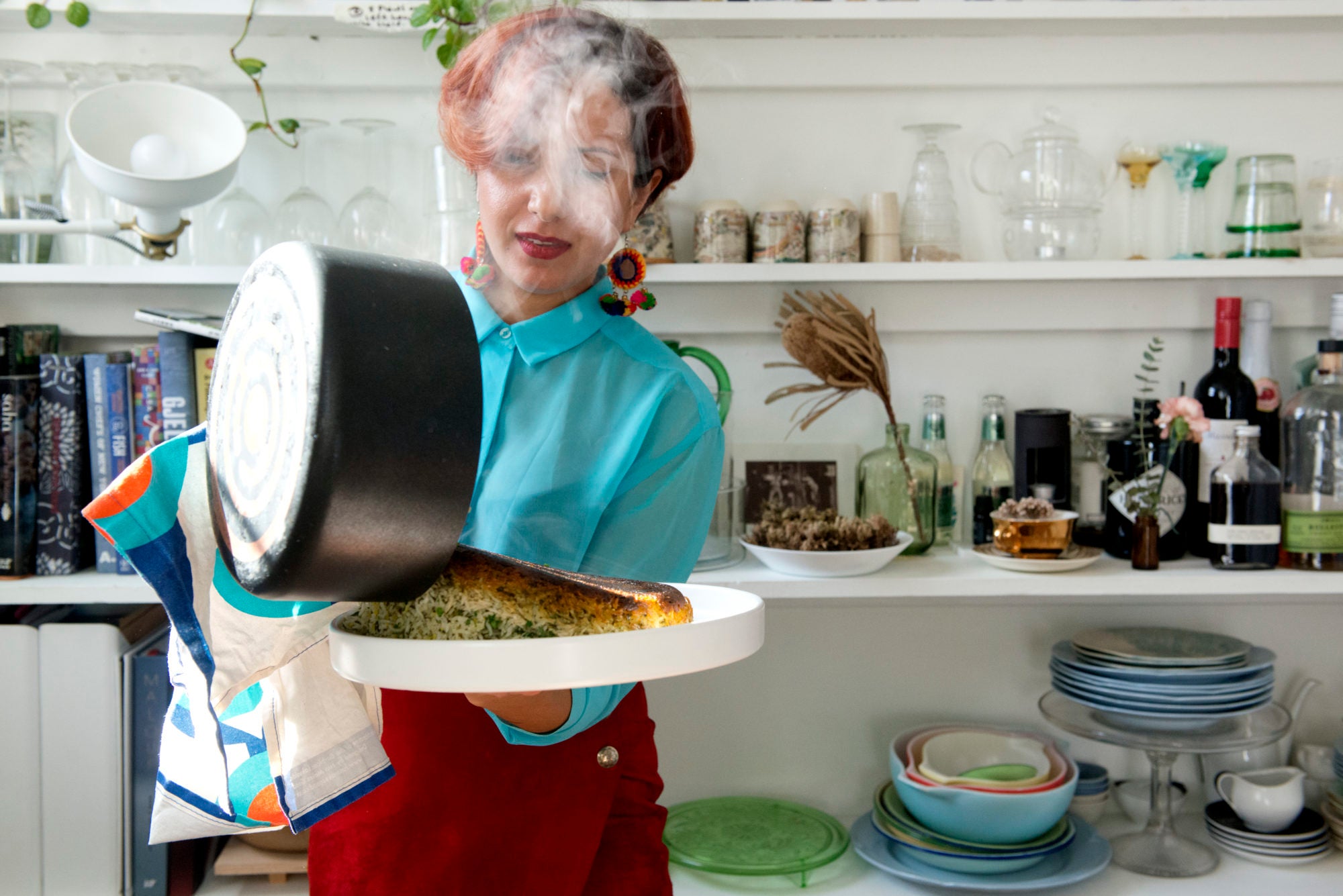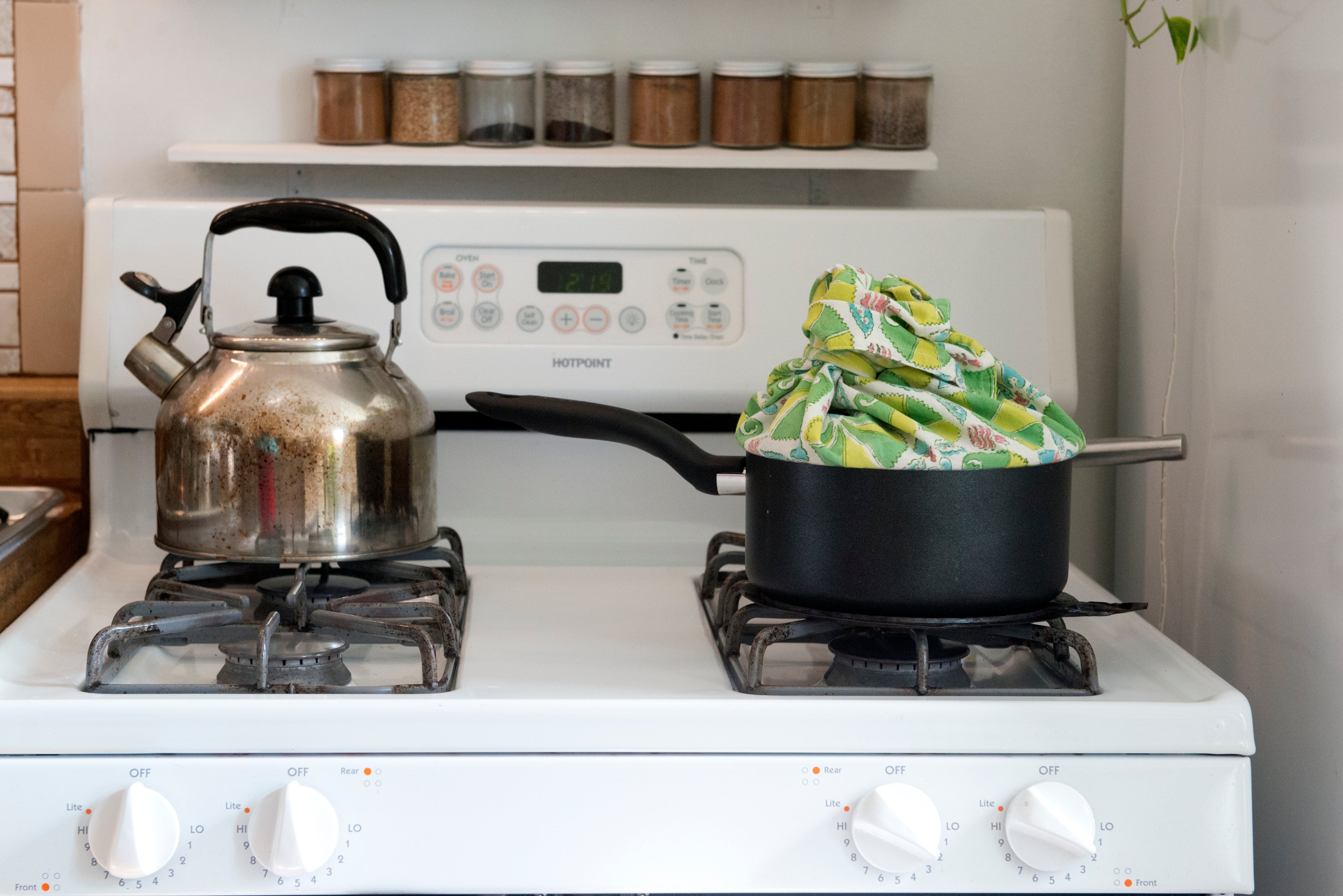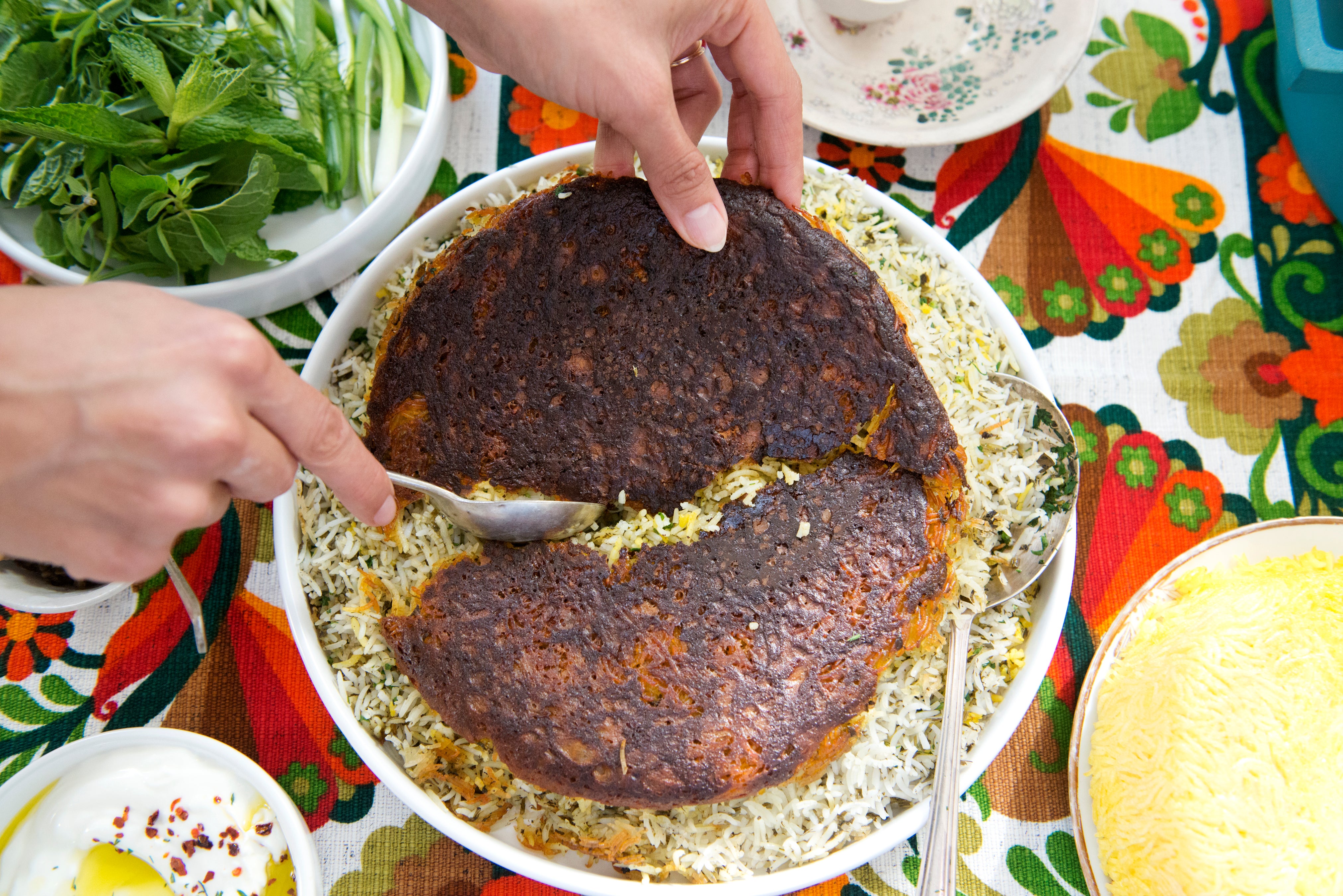
A home cook calls her fragrant and flavorful style of cooking Persianesque.
While Soli Zardosht adds a splash of crimson saffron water to the turmeric-stained yogurt-and-egg mixture already at the bottom of the pot—followed by a heaping pile of rice—she quips that most everything in Persian cuisine is slow-cooked. Earlier today, in a matte cast-iron crock that matches her sheer sky-blue shirt, she’d made a lamb stew, its meat falling off the bone. But her full concentration right now is on an everyday rice dish. It’s a celebrated side, one that’s defined by its much-anticipated crisp exterior, called tahdig, which she swiftly assembles. Once the rice is on the “hob” (a British English term for stovetop she uses), an hour and a half passes as we catch up on world affairs over mugs of black tea. This gives Soli just enough time to convince me that if the tahdig fails and falls apart, we’ll still have rice; it’s a pessimistic caveat, but an honest one. Ninety minutes later, Soli stands barely tall enough to clear the counter, with pot in hand and a plate hovering above, ready to invert what may or may not be tahdig. With that flip of the wrist, all the waiting ends with a climactic few seconds.
I liken it to celebratory timpano—the baked pasta dish in the movie Big Night, an upside-down bowl slowly loosened and lifted by the four hands of actors Tony Shalhoub and Stanley Tucci—but Soli doesn’t know the reference. She kind of laughs at the fact there’s such an epic “food scene” in a film, explaining that Iranian food is central to her daily life but not really fetishized in the same way as the West. To her, timpano sounds less like tahdig than it does tachin, a Persian baked rice cake comprised of parboiled rice, cooked meat marinated in a yogurt-and-egg mixture, layered, then put in a pan and baked in the oven. Soli uses this same yogurt/egg method in her tahdig. It’s like the best of both worlds, and it’s more flavorful, too; the texture is a bit thicker than the traditional tahdig, but it still provides a pleasurable crunch.
Soli calls herself Persianesque, in reference to her birthplace of Shiraz, Iran, annotated by a London upbringing. She speaks Farsi, but not as often as she used to, mainly hearing her native tongue whenever her mother, Pari, recites Hafez, the 14th-century Persian poet, who wrote on the topics of life, love, and the human condition. These expressions of Persia find their way into Soli’s style of cooking and are then modified by her modern interpretation of her family’s heritage.

Soli is fashionable and was a menswear designer before opening up a café in London, which is now run by her sister Sanaz. While Soli now lives in Brooklyn, her move was part of an expansion plan, one that she hoped could nurture a present-day appreciation of Iranian culture. She’s now married to her musician husband, and even with a green card in hand, she fears returning home because of the current political climate. She wants to overcome that fear through Persianesque pop-ups here in the States, the same way she started serving food in the U.K., and publicly reconnecting to her past.
Her fare is all her own—a compilation of cuisines in the same way that Iran is Middle Eastern as well as Eastern European, due to proximity to Turkey, and borders southern Asia by way of Afghanistan, with the international city of Dubai due south across the gulf. For over 1,000 years the Achaemenid and Sasanian Empires were vast, their cookery combined within these borders. So why should Soli, or anyone, feel confined by what it means to be Persian, or a person overall?
She exchanges recipes with her sister Setareh in Minneapolis, which are easy and accessible, even in the Midwest. It doesn’t take much; an assembled advieh (or set of “the usual spices”) that a Persian pantry is made up of: saffron, turmeric, sun-dried black limes for tartness, salt, and black pepper. Cinnamon isn’t as necessary as some would think, and cardamom is far more for sweet things than for savory. With these limited ingredients, Persian cooking relies on time to really transform the dish.

“Patience,” says Soli, as she opens the pot to check whether the rice is setting up (though I’m told not to do this unless I really know what I’m doing and have made Persian rice a million times). Is it the right shade of gold? Will it come out in one piece? Will we have to scrape it off the bottom?
After dinner Soli might tell her mother, “The tahdig was delicious,” which is something that should be mentioned only if it comes out well and go unmentioned if it does not. It’s a centerpiece, that brittle little division placed in the middle of the table, separate yet synonymous with the rest of meal; relished in reflection, it’s a postscript. It’s not that it doesn’t matter; it’s just that other things may matter more. Tahdig is literally the bottom of the pan—all the rest is just rice.